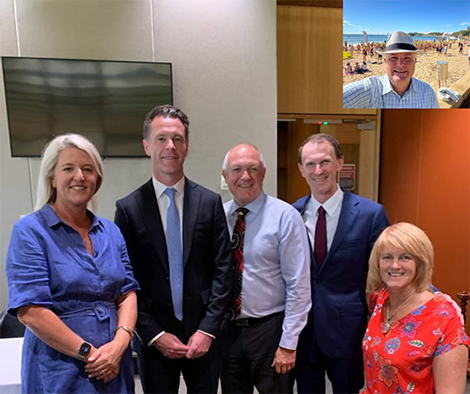EXCLUSIVE: Central Coast Council withheld information from the public, and its valuers, about the environmental value of land at Thompson Vale Road, Doyalson, and several community groups have called for an independent investigation of the sale.
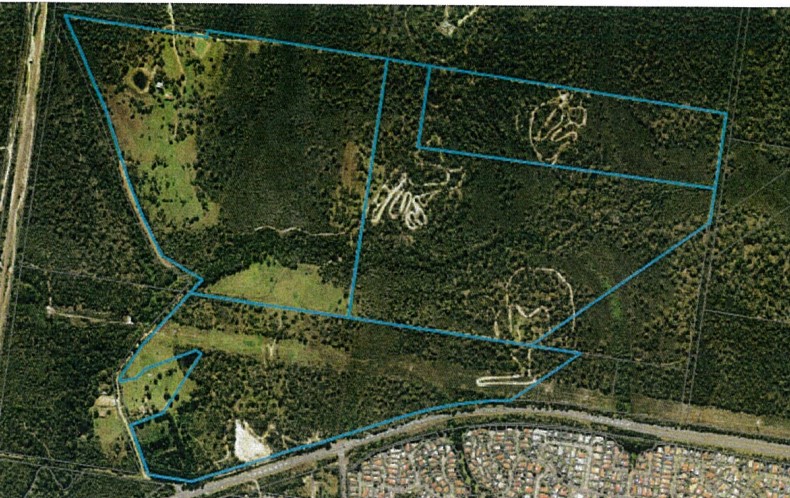
By Jacquelene Pearson*
As some Central Coast Council staff were recommending, in late 2020, the sale of land at Thompson Vale Road, Doyalson, other staff had prepared a draft Biodiversity Stewardship Site Assessment Report confirming the environmental significance of the land.
The new Minister for the Central Coast and Member for Wyong, Mr David Harris, said he had long held concerns regarding the Doyalson land that flowed back to its original purchase by Wyong Shire Council and subsequent lease by Wyong Coal, proponent of the Wallarah 2 coal mine.
“I’m keen to work with community groups and forward any concerns to relevant authorities to ascertain whether correct procedures were followed,” Minister Harris said.
Chair of the Community Environment Network (CEN), Mr Gary Chestnut, said documents released to The Point under Government Information Public Access (GIPA) laws showed the council spent significant staff resources between 2018 and 2020 to prepare a stewardship agreement that would’ve resulted in the perpetual protection of the land.
Meanwhile, another part of the council was describing it as “surplus to needs” and recommending it for sale with a note about its potential biodiversity value hidden in the detail.
Mr Chestnut said two of the documents released via GIPA indicated that the Doyalson land was potential habitat for up to 19 threatened species and should not have been part of the council’s asset sales program, no matter how dire the financial situation.
“It has to be one of the highest value pieces of environmental land on the Central Coast because it is a potential home to 19 threatened species,” Mr Chestnut said.
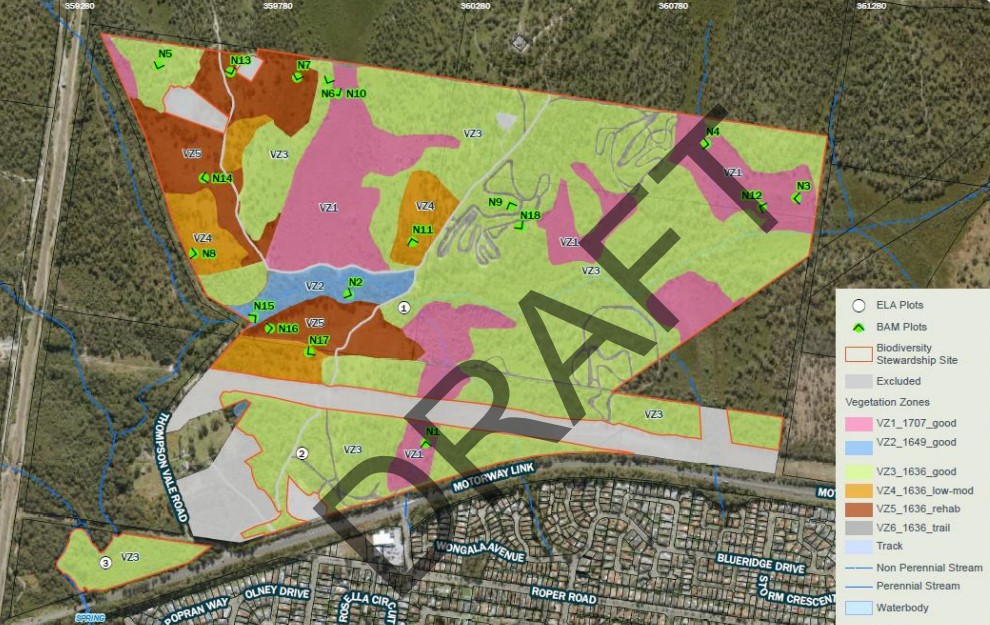
Mr Chestnut used a “Biodiversity Credits Pricing Spreadsheet”, also released via GIPA, to calculate the value of the land in biodiversity credits. He came up with a ballpark figure of $2.7 million.
The land was acquired by Wyong Council in 2014 for $7 million and sold by Central Coast Council in July 2022 for $5.5 million.
“The council could have received long-term funding from the state to care for the land,” Mr Chestnut said. “The Biodiversity Conservation Trust (BCT) would hold the $2.7 million in an account and would give the council money each year in perpetuity to care for the land,” he said.
Version 3.3 of the draft site assessment was prepared by a qualified member of council’s staff. Twelve months later a council director denied the council was preparing a Biodiversity Stewardship Agreement for the land.
The community still doesn’t know who sat around the table in late 2020 to decide which parcels of land would be sold.
At that time Rik Hart, who is now administrator, was Acting CEO. Did he and Interim Administrator Dick Persson AM know about the biodiversity value of the land and decide to sell it anyway? Or were council staff selective about the facts they shared with the committee deciding which assets to sell?
The executive summary of the draft site assessment said the council intended to enter a Biodiversity Stewardship Agreement with the NSW Biodiversity Conservation Trust (BCT) for part of a 152.54-hectare parcel of Council-owned land over eight lots near Doyalson.
“The site is known as the ‘Thompson Vale Road Reserve Stewardship Site’. The reserve is R0398 in Council’s natural asset system,” the draft report said.
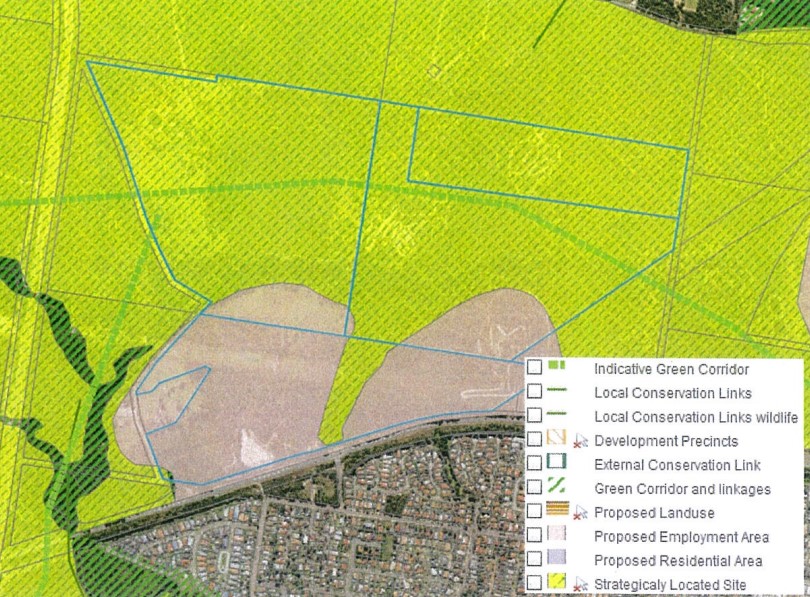
Was this information shared with the Interim Administrator and/or the ACEO?
Council has refused to answer questions from CEN about who, within the ranks of its senior management, knew about the high conservation value of the land, at the time they were deciding to include it in Tranche 1 of the asset sales program.
In March The Point sent the following questions to council:
- Who were the members of the project group chosen by the Economic Development and Project Delivery Unit in 2020 to implement the council’s “Asset Efficiencies and Sales Deliverables”?
- Was Mr Hart a member of that project group?
- Was Mr Hart present when the project group discussed the inclusion of the Thompson Vale Road, Doyalson land in Tranche 1?
- Did the project group consider (i) the draft Central Coast Council Biodiversity Stewardship Site Assessment Report Thompson Vale Road Reserve (RO398) version 3.3 or earlier and/or (ii) the October 2018 ecological preliminary stewardship site investigation, when determining whether or not to include this land in Tranche 1?
- Did Mr Hart in his capacity as Acting CEO, receive the report that became agenda item 5.5 at the 30 November council meeting? What action did he take in considering whether or not to include that report in the business papers for the 30 November council meeting?
- Between the initial release of the agenda for that meeting and publication of the report on the Friday evening before the meeting, what documents did the report’s author, business unit and directorate have access to in determining to include as a strategic implication of selling the land “loss of proposed Biodiversity Stewardship Agreement site”?
Rather than answer our questions, Council’s CEO, David Farmer, sent the following response:
“Council’s land sale program was commenced and undertaken under significant financial duress, and at the direction of a third-party lender, which required the land sale program to commence and reach critical thresholds at extreme pace. Council was not afforded the luxury of time nor of ensuring that each particular parcel necessarily achieved maximum value. Rather council was bound to achieve ‘not less than market value as determined by an independent valuer’ (see council resolution 1257/20).
“It is council’s position that the relevant parcel was sold in accordance with the resolution and so there is no probity issue arising. Due process was followed.
“In relation to the suggestion that the sale of land at Thompson Vale Road Doyalson that further value could have been extracted by applying potentially available biodiversity or ecosystem credits to the land, it should be noted that the existence of potential ecosystem credits does not equate to the actual application of those credits, in exploring the biodiversity value of the land, council prepared a report and commenced negotiations with the relevant state body. However, those negotiations did not progress and no Biodiversity Stewardship Agreement was ever entered.
“Accordingly, the potential value remained just that, and for the above reason certainly not capable of realisation within the tight time frames required during council’s liquidity crisis,” Mr Farmer said.
He said council staff acted “in good faith” when instructing the valuer and “adequate briefing information was provided to form the assessment of the value of the land. It is not accurate to consider that the Central Coast community ‘lost’ any sum of money by council pursuing the transaction in the manner it did.”
Mr Farmer concluded with the following reminder: “These were extraordinary times, the reasons behind which were extensively reviewed via a public inquiry which led to the dismissal of the previous elected council. The organisation’s ability to function was effectively in the hands of its bankers, and immediate action was required at multiple levels…It is not reasonable to review the decisions made at a time such as this without understanding the severity of the issue and the urgency with which the council had to respond.”
Setting the scene
Central Coast Council faced a cashflow crisis in late 2020. The councillors were blamed and suspended by the NSW Government. An Interim Administrator and acting CEO were installed. Services were cut, jobs chopped, rates increased, money borrowed and assets sold.
Interim Administrator Dick Persson AM and acting CEO Rik Hart publicly promised they would not sell environmental land and they would not sell land for less than its market value.
Environmentally valuable land at Doyalson was sold despite appeals from the community. It was understood that approximately 20 per cent of the land was zoned C2, the highest level of protection outside of a national park or nature reserve.
According to the documents obtained by The Point, the amount of unencumbered land at Doyalson was overstated. Mapping indicates that, rather than 50 hectares of unencumbered land, the amount that could be developed without requiring biodiversity offsets would be closer to five hectares.
CEN’s Chair, Gary Chestnut, said that fact should have been disclosed to the purchaser.
The Point has made several attempts via phone and email to contact the purchaser of the land, a Central Coast company that has previously done substantial work for council. It has not responded to our interview requests or written questions.
The first time the public learned of council’s intention to sell any assets was on 9 November 2020 when then Chief Financial Officer, Natalie Cowley, tabled a Business Recovery Plan status report.
Staff needed to: “Identify at least $50 million of under-performing property assets or property assets that would not negatively impact the strategic direction of the Community Strategic Plan that can be sold…”
An update was given at the council meeting on 23 November: “Staff have identified the first phase of underperforming properties assets that will be recommended to council for sale…”
Tranche one
Agenda item 5.5, sale of council operational assets, was considered on November 30.
“This report nominates an initial group of properties which are surplus to council’s current and future needs.
“These properties were nominated after completing a desktop review of council’s high value assets which would have the least perceived impact to the community.”
The list of properties was not posted until late on the Friday night before the Monday night meeting. The community was not consulted.
Tranche 1 – Top Saleable Council Assets, included the land at Thompson Vale Road, Doyalson.
It was described as four lots known as Spring Creek Business Park. It had the potential for industry release but included a proposed biodiversity corridor. There was a license to Wyong Coal due to expire in June 2021 and easements for transmission lines on three lots.
The land size was 144.02 hectares and it was zoned RU6 Transition and C2 Environmental Conservation. The words “open forest gum” and “swampy” were mentioned but “wetland” was not. A strategic implication of selling was summarised as “loss of proposed Biodiversity Stewardship Agreement site”.
Challenging the sale
Mr Chestnut said he was shocked when he realised, after Dick Persson resolved to sell the Doyalson land, that it was land he had urged council to add to the Coastal Open Space System (COSS) of natural reserves.
Chestnut said he did everything he could to urge Persson and council executives to take the Doyalson land off the market.
CEN started writing to Mr Persson and NSW Government ministers before Christmas 2020 urging them to withdraw the land from sale. The correspondence between CEN, council and the NSW Government continues over two years later.
Mr Chestnut spoke at the council’s first meeting in 2021, drawing the Interim Administrator’s attention to minutes from the COSS Advisory Committee because they highlighted “the concern of the committee on the implications on the sale of environmentally sensitive land at Thompson Vale Road”.
Mannering Park Progress Association wrote to Mr Persson in early 2021: “Mannering Park Progress is deeply concerned that you have seen fit to list environmental lands that form part of the east west environmental corridor for native fauna as well as protection for endangered flora in Thompson Vale Road, Doyalson, for sale. We respectfully ask you to please remove this listing…”
By May 2021, Persson had left the council and Rik Hart moved from ACEO to Administrator. Mr Chestnut led a delegation of concerned residents to meet Mr Hart about the asset sales.
In September 2021, Chestnut wrote to Scott Cox, council’s then-director of environment and planning, about a presentation by a council officer to the COSS Consultative Committee.
Mr Chestnut said the presentation was “offensive as it did not show any respect for any member of the public”.
“The presentation by the council officer stated words to the effect … as the land is currently on sale, I cannot provide you any information.”
Chestnut asked Cox to answer questions including the criteria used by council staff to select assets for sale.
Cox referred the letter back to council’s property and economic development team.
At the end of September 2021, a member of the COSS consultative committee, Mr Paul Links, was blocked from speaking at council because the asset disposal matter had already been debated.
Mr Links was going to tell council that the Doyalson land “held high biodiversity conservation value… It was obvious this holding was ideal for addition to the COSS.
“Why did this manager, when he attended the COSS meeting last week, not answer questions relating to the sale of the land?
“The land was listed for sale on 16 April 2021. On 31 May a listed price of $5.5 million was published – this is ridiculous given the property was purchased for $7 million in August 2014.
“Any property purchased in 2014 would have increased in value between 70 percent and 100 percent to today’s date: 70 percent results in $12 million today; 100 percent results in $14 million.
“It is poor governance for a council to sell environmental land to pay down debt. It would be negligent of administrators to sell this land for less than what council originally paid.”
By that stage the Doyalson land was “under offer”. Time was running out. The correspondence continued to fly between CEN and council.
State of the environment
Chestnut decided to write, one more time, to Rik Hart, informing him that he had undertaken a review of the former Wyong Shire Council’s State of Environment Report of 2003/04 (SoE). It turns out Wyong Shire Council had long known about the conservation value of Spring Creek.
According to the SoE, it helps to drain the Wallarah Creek catchment, is an area of significant biodiversity with many threatened plant and animal species. The ridges and slopes are covered in a woodland type found only in the north of the shire and 51percent of this vegetation type had already been lost to the region.
The Spring Creek system is characterised by low nutrients and Gilgi soils. Flora and fauna surveys confirmed that the Spring Creek wetland system was in excellent health. Water quality data indicated that the catchment contained low phosphorus levels making it particularly vulnerable to the impacts of development.
The Spring Creek Wetland system has a distinctive fine scale structure that is increasingly rare. The system is vital to the health of the Tuggerah Lakes system.
According to the SoE, development of the wetland could increase nutrient flows into the Tuggerah Lakes system by 600 percent.
Mr Chestnut started asking questions about whether senior staff at the council had failed to fulfil their professional duties if they had recommended the property for sale knowing about its potential biodiversity offset value.
He was recently told by CEO David Farmer, two years later, no staff within Council had breached Council’s Code of Conduct in respect to the sale of land at Doyalson.
In November 2021, CEN called for an independent inquiry into the sale of the Doyalson land. At that stage council had wrapped the whole transaction in “commercial in confidence” and would not disclose the name of the purchaser, the purchase price or any other details.
“We are concerned Administrator, Rik Hart, wasn’t given all the facts about the land at 200-1550 Thompson Vale Road before deciding it could be sold,” Mr Chestnut said.
“Was Mr Hart aware of a proposed draft Biodiversity Stewardship Agreement (BSA) Council had prepared for the land? Did relevant council staff relay the history, environmental character, the site-specific management plan and the potential value of the biodiversity credits of the land to Mr Hart?
“Would Mr Hart and Mr Persson have gone ahead with the sale of this land if they’d been fully informed and why were they not given all the information required to make a fully-informed decision?”
In December 2021, Mr Hart informed Mr Chestnut that: “Council has now considered the position of CEN, as well as your own personal representations of numerous occasions in relation to this matter.
“Unfortunately, it is unlikely we will reach any agreement given our opposing views. I consider this matter now closed and respectfully request that you accept that we have investigated and heard your opinions,” Mr Hart said.
At around the same time, Natalia Cowley wrote to Mr Chestnut and stated: “No Biodiversity Stewardship Agreement (BSA) has been prepared for the land.” She did not mention the preparation of assessment reports or negotiations with the BCT.
Sold!
In July 2022, council noted that the land had been sold for $5.5 million and published its valuer’s report. The valuer had been instructed to produce a market valuation on an ‘as is’ or ‘as if complete’ basis on the critical assumption that the property is free of contamination and biodiversity issues…”
“We have been instructed to provide an ‘as is’ value based on the current underlying zoning and on an ‘as if complete’ basis on the assumption of a rezoning to part of the subject property to IN1 General Industrial or equivalent zoning,” the valuation report said.
The valuation report was dated March 2021. It recommended council undertake biodiversity certification studies to “determine whether any biodiversity credits are available”.
It appears the valuer’s briefing by council staff did not include any information about the studies that had already been completed to ascertain the land’s biodiversity value.
Access to information
As Mr Chestnut continued to correspond with council, the administrator, Office of Local Government and Minister for Local Government, The Point decided to lodge a GIPA application with council to access documents related to the Doyalson sale.
Council refused to provide any documents on the basis that it would not be in the public interest to do so. They acknowledged the existence of a: Biodiversity Stewardship Site Assessment Report (BSSA); instructions for completing the Biodiversity Stewardship Site Management Plan (BSSMP) template; a desktop site review; Thompson Vale Preliminary site investigation; a total fund deposit worksheet; and a tax invoice.
We appealed to the Privacy Commissioner who instructed council to review its decision on the basis that it had not adequately proven that release of the information was not in the public interest.
Council acknowledged its initial reasons for refusing to release the documents were not well founded. Rather than releasing the documents, however, it found another reason to refuse their release.
We appealed to the NSW Consumer and Administrative Tribunal (NCAT). We agreed to mediation after an initial hearing. The morning before mediation, council agreed to release all documents.
The documents were finally released in January.
Stop work
In September 2022 the Department of Planning and Environment received a report of potentially unauthorised native vegetation clearing at the Doyalson property. It issued a Stop Work Order under Section 11.3 of the Biodiversity Conservation Act 2016.
The basis for issuing the Stop Work Order was: “The property is designated on the in force Native Vegetation Regulatory Map, prepared pursuant to the Local Land Services Act as Category 2 – Sensitive Regulated Land.”
The Department of Planning and Environment told The Point the order halted any further clearing.
“As an investigation is under way DPE is not able to provide further information,” we were told.
Questions must be answered
The Community Environment Network, members of council’s own COSS consultative committee, Mannering Park Progress and at least one council whistleblower, believe an independent investigation of the Thompson Vale Road land sale is warranted.
Now the Minister for the Central Coast has offered to work with those groups.
“I am not implying that Rik Hart or Dick Persson did anything wrong but for the sake of transparency and public trust the community is entitled to know how and why a decision to sell highly sensitive and valuable environmental land was made,” Mr Chestnut said.
“There may not have been a signed biodiversity agreement with the BCT but council should have clearly informed the community they were working on one. They should have called a spade a spade – said ‘look we have been assessing this land but it needs to be sold’. If the council had said that, fine, but they have constantly said it is not of environmental value.
“There is a responsibility on a council to disclose all relevant information. We must have checks and balances. Someone must’ve signed off on the report that said it was OK to sell this land. Who instructed the property team to include that the sale would mean the potential loss of a biodiversity stewardship site?
“The urgency has now passed. Council’s financial viability has been restored. It should repurchase this land and dedicate it to COSS,” Mr Chestnut said.
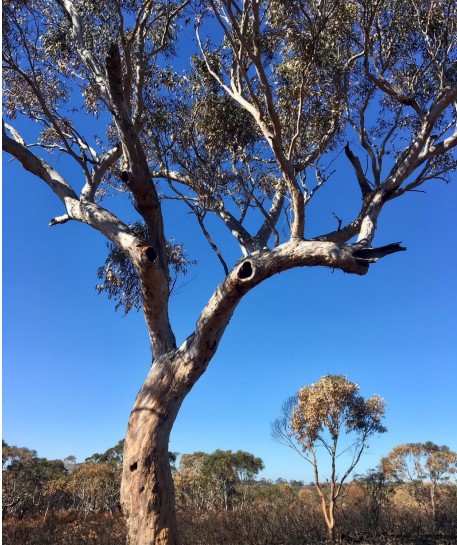
Step back in time
This saga started back in June 2014 when a director’s report was presented to the Wyong Shire Council recommending the purchase of land at Thompson Vale Road, Doyalson from Woodbury Park Pty Ltd.
Council’s General Manager negotiated with Terrace Towers Group over the potential purchase of the lands at Doyalson and 11 other lots at Jilliby from Warner Business Park Pty Ltd. The Terrace Towers Group had approached the Wyong Shire Council offering its holdings at Jilliby and Doyalson for sale. The holdings were owned by the two separate companies which were part of the Terrace Towers Group.
The 25 June 2014 report to a Wyong Council meeting noted the purchase price of $7 million for the land. Terrace Towers Group placed its own terms on the deal including the payment of the $7 million in five instalments – $2 million on exchange, $1.5 million by 31 December 2014, $1 million on I July 2015, $1.5 million by 31 December 2015 and $1 million on settlement.
Wyong Council’s conditions included that the exchange of contract took place on or after 1 July 2014 and that the sale couldn’t be completed until on or after 1 July 2016. The council required the vendor provided council with surveys, geological reports, ecological reports, contamination reports and acoustic studies and a licence to undertake further studies and works between exchange and sale completion, and early possession of the sites. Council also agreed to pay all council rates on the land.
In 2014 the Doyalson land was described as located in an area of strategic importance to the council and likely to provide “opportunities for future employment and environmental offset lands”.
The total cost to Wyong Shire was $7 million for the Doyalson property.
Independent Councillor Bob Graham’s opposition to the deal resulted in Mayor Doug Eaton making a Code of Conduct complaint against him.
Graham responded with a media release that said he considered the transaction a “speculative land deal”.

On 12 January 2015, around six months after the property deal, General Manager of Wyong Shire Council, Michael Whittaker, wrote to councillors and staff to inform them that Terrace Towers Group Chief Executive Officer, Mike Dowling, had been appointed as the council’s Director of Property and Development.
“Mike [Dowling] has extensive experience in property development, funds management and facilities management,” Whittaker’s memorandum said.
“He was the key person who developed the Tuggerah Business Park and Woodbury Park Estate in Wyong. It is clear that Mike is well credentialed to assist us in making Wyong a better place.”
Wyong Shire Council was merged with Gosford City Council to form the Central Coast Council in May 2016. Councillors from both were immediately sacked and replaced with an administrator. Mike Dowling stayed on for several years as a member of the new council’s executive leadership team as Group Leader of Assets, Infrastructure and Business.
The Doyalson land remained in council ownership through amalgamation and the studies undertaken indicate its value to the community and council.
*Jacquelene Pearson is the publisher of The Point ESG News Site. She is employed as a casual community liaison officer by the Community Environment Network.
Enjoy this article? Explore more of our ESG News below:
Environmental Justice News | Social Justice News | Good Governance News | Climate Change News | ESG Investing News | Housing News | Renewable Energy News | Breaking Central Coast News
Prefer your news delivered to your email inbox?
Click here to subscribe to our free weekly newsletter to stay up-to-date with local, national and global ESG news.


